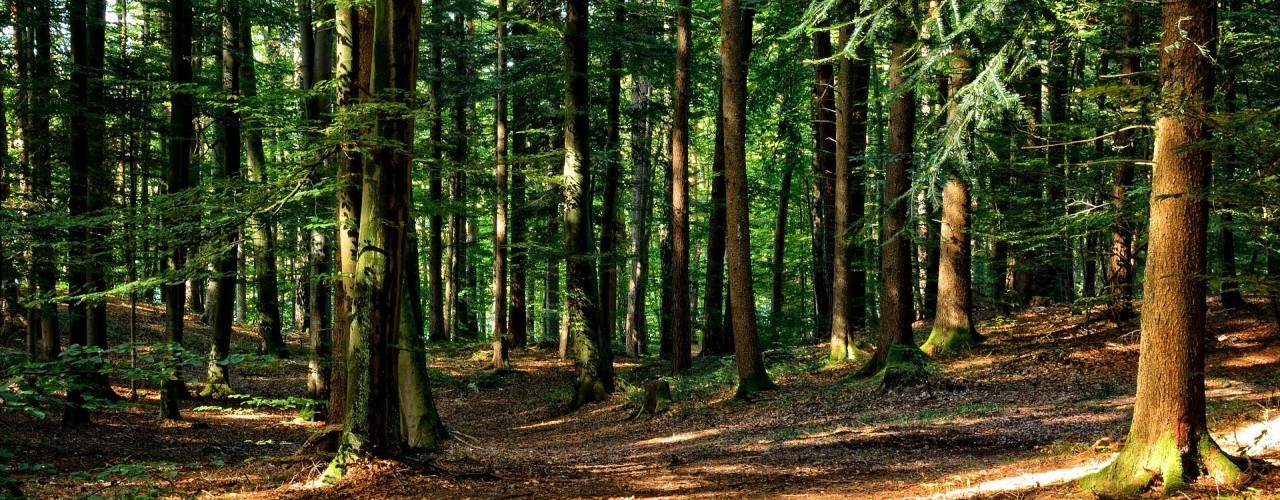Classification of Trees Using Instance Segmentation
DTLab Challenge with the Bavarian Forest National Park

Deep Learning-based Classification of Tree Species and Standing Dead Trees on the AWS Architecture
Overview
The Bavarian Forest National Park was founded in 1970 and served as the first national park in Germany. It is located right at the border to the Czech Republic and has the principle to "Let nature be nature". That means any human intervention is off-limits within the large protected areas and natural process including catastrophic events are allowed to occur there. Unfortunately, it suffered from the bark beetle infestations recently, which resulted in massive tree deaths all over the forest. As this problem might also affect the wildlife inhabiting the forest, a compromise with methods such as tree rejuvenation is met to prevent further loss.
The knowledge of the forest's composition, including the species of trees and the amount of deadwood, is an important factor in the rejuvenation process. A forest inventory is regularly conducted across sample plots scattered all over the forest area, which provides representational information about the region. This process often requires multiple survey teams and can last for days because of the forest's vast area. As an alternative, an airborne laser scanner (ALS) could be used to capture 3D visual data, comprising point clouds of a large area with high precision in shorter time.
To derive information from the visual data, artificial intelligence (AI) can be trained, using select algorithms to detect single trees along with their species and their health status. In this challenge deep, learning was chosen as a subset of AI. to accomplish the task of categorizing single trees into their appropriate species and to identify their health status.
Problem
For this challenge, the students asked themselves the following question:
"How can we achieve higher classification accuracy as the AI tries to categorize single trees?"
Machines can make predictions about which trees belong to which category if they are "trained" optimally before with enough reference samples. This process is called "machine learning". There are several known learning algorithms such as "random forest" or "logistic regression", which the CORSNAV Research Group at the University of Applied Sciences Munich experimented with to classify single trees into their respective species and to detect deadwood. However, the classification accuracy of these algorithms still left room for improvement, as it laid at around 70-80%. The reason for it were the small amount of reference samples from all categories and the complex structure of the forest so that the algorithms faced difficulties in differentiating between living and dead trees.
Approach
The CORSNAV Research Group found a potential in "deep learning", which is a sub-field of machine learning. With deep learning it is possible to improve the classification accuracy further, beyond 80%. It mimics th function of the neural networks in the human brain and learns hierarchically, starting from the local patterns like leaves or branches of the trees to the more complex scenes, like the complete tree itself. Moreover, it is able to accommodate a big amount of reference samples that are needed for the training phase.
To find out how well deep learning performs, the challenge was created as a final-year thesis assignment for a single student then. The student assigned for this challenge took part in various different workshops, such as the Amazon Web Service (AWS) Summer Camp and had a short introduction to the innovation method "Working Backwards" to learn more about the services offered by AWS . That way he was able to see as well how a product is conceived by Amazon. Based on the innovation method "Working Backwards", a meeting was arranged with the administration of the Bavarian Forest National Park to collect information and the requirements needed for this challenge. The result of the meeting was documented in a roadmap to maintain a consistent progress throughout the thesis. An AWS Solutions architect provided feedback to the student about how to design a workflow suitable for cloud computing on AWS.
Prototype
In this challenge, two technology services of AWS were used. One was the Amazon Elastic Compute Cloud (EC2) instance, which is basically a virtual computer offered by Amazon, where hardware resources can be adjusted to specific needs. The most powerful P3-instance with eight graphics processing units (GPUs) was chosen to handle the intensive deep learning task. To store the reference data and the results, Amazon Simple Storage Services (S3) was reserved. The data from the EC2 instance is stored independently, which is important in case of instance crashing or unavailability.
For the deep learning part the library PyTorch was used for the development. It is written in Python and suitable for beginners that are starting with deep learning. To manage various versions of software dependencies and to pack them in a single application image, the Docker virtualization tool was used. With that image the application can be run on any computer including EC2 instance.
Next steps
The challenge is still going as final-year thesis offering for students interested in deep learning and C. The Bavarian Forest National Park maintains close cooperation with the CORSNAV Research Group and the Digital Transformation Lab for further challenge ideas.
Lecturer: Prof. Dr. Peter Krzystek
Date: 26.4.2020
Documents
A selection of the documents created by the students during the challenge can be found here: